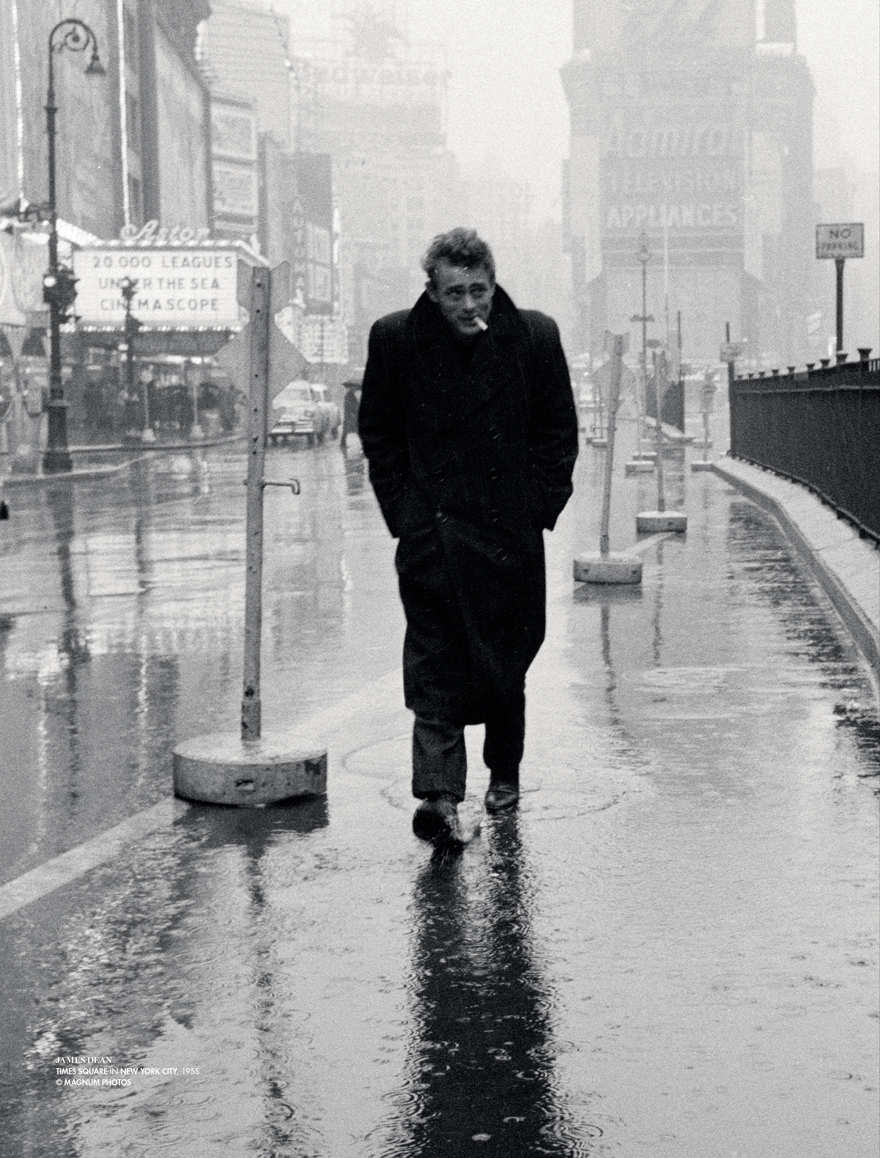—-
“Being a good actor isn’t easy. Being a man is even harder. I want to be both before I’m done.”
—-
– JAMES DEAN
—-
I don’t do addiction half-ass. I turned 18 and the first thing I did was buy a pack of Lucky Strikes. James Dean, Cool Hand Luke and Rock Hudson sweaty on a horse all came sharply into focus as I lit a cigarette with a teenage crush. I smiled. Addiction promptly kicked in and I had to slap on a patch at 22, after reaching an all time high of smoking two and-a-half packs a day.Cigarettes slowly became part of our culture’s vernacular. In the 1800s the habit was hidden and taboo — something only gentleman did in parlors and Dowager Countess types scoffed at and scowled. Meanwhile, desperate housewives stole drags, swigging a potion of cocaine-laced elixir at home, alone and boiled the household laundry.
The Great War changed everything. When the doughboys came home from Europe, flush with cash and now the cool kids, they started sharing smokes. Unlike the ungrounded nature of huffing in Europe, the habit quickly blended into the mainstream as the 20s roared.
The J. Paul Getty Museum has a great photo created in 1920 by Man Ray titled “Woman Smoking a Cigarette.” During this era, photography moved from documenting war, devastation and rich family sittings, to the beginnings of fashion imagery.
Smoking quickly became part of the iconography, because all the gorgeous newly married, full of life soldiers enjoyed a smoke in the open. Not to mention, cigarettes were 10 cents a pack. The roaring twenties also brought movies to life. A few years later, everyone escaped the Great Depression to watch the stars light up cigs on the silver screen.
While starlets in movies covered their brands packaging as not to alienate one viewer’s smoking preference over another, on the small screen Philip Morris produced their own hour on CBS. During this hour, big stars like Lucille Ball appeared smiling with a cigarette in hand. In 1957 Reader’s Digest published a series of articles that correctly reported a link between tar, tobacco, nicotine and cancer. As a result, filtered cigarettes fast became the norm, but the nation still held on to its habit in mass.
Meanwhile, the entertainment industry held on to its love affair with the cigarette and its perceived glamour. A hopelessly lovable Audrey Hepburn ————-
added a brand new layer to their appeal with the appearance of her long cigarette holder on the Breakfast at Tiffany’s movie posters.
Helmut Newton’s famous picture for Yves St Laurent in 1975 on the Rue Aubriot in Paris is at the center of that era. A woman dressed like a man, kissing a naked woman, not only stood for sexual freedom and liberation, but the empowering of women in general.
April 1st, 1970 it was decided that advertisements couldn’t air during popular shows like ‘The Flintstones,” which caused industry thought leaders to create Joe Camel, a suave figure who entertained girls, drove fast cars, gambled and rose to popularity in the partying 80s.
Smoking in the 80s was all about teenage rebellion, exemplified by many of John Hughes’ brat pack characters in movies like The Breakfast Club. Throughout the decade, smoking still endured with its cool and rebellion, but the storm was brewing. The tobacco industry tried hard to bury the evidence of their carcinogenic product, but social change was inevitable. Slowly through the 90s smoking lost its foothold and sales plummeted in the United States while growing in third world countries like Yemen and Kenya. Stricter rules were further placed on puffing tobacco, like banning it in restaurants, bars and public places as well as direct media buys.
As the year 2000 approached, the habit was used to signal machismo and counter culture once again. Brad Pitt lit up in Fight Club, Angelina Jolie rebelliously puffed in Girl, Interrupted, but the use of cigarettes were rapidly being snuffed out from American life. Characters that lit up on the silver screen and in fashion glossies started to fade and smoking as a normal, everyday ritual left the mainstream. As the aughts marched on, marketers and entrepreneurs began to figure out the next best thing for cigarette lovers.
Enter the e-cigarette. Technology is the answer to the smoking industry’s future since e-cigarettes don’t have tobacco, just pure unadulterated nicotine. Because of this, e-cigs don’t run into the same rules and regulations as old-fashioned smokes. Regardless, the ads of e-cigarettes are very bit as youth obsessed as before, but look as if they’re hawking energy drinks and not nicotine extract. Ironically, this makes the user feel young and healthy, managing to balance vitality with a sense of rebellious cool.

